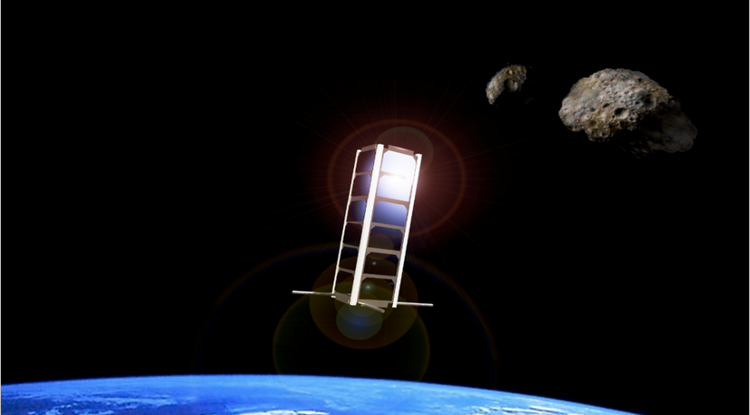The University of Arizona was recently chosen as one of the colleges for the Minority University Research and Education Project Institutional Research Opportunity, or MIRO.
The grant gives the UA, and Puerto Rico $3 million over three years to study what Jekan Thanga, the principle investigator of the MIRO project, simplifies as asteroids.
“Asteroids are an important issue in terms of planetary defenses,” Thanga said. “We need to know and learn about them sufficiently so that we can mitigate such an impact in the future.”
In the case of an impact of a large asteroid, Thanga and his team hope to create ways to study asteroids, first with robots and then with humans.
Instead of training like Bruce Willis and detonating a bomb to destroy an asteroid, the team instead will first create CubeSats, or a miniature satellite, that could study the environment around it by using the humans controlling it back on Earth.
According to Thanga, the CubeSats come in varying sizes with the most smallest one named the 1U. The 1U versions have a volume of “… 10 cm x 10 cm x 10 cm and have a mass of 1.3 kg. The more popular configuration, the size of a loaf of bread, is the 3U, with a volume of 34 cm x 10 cm x 10 cm and mass of 4 kg.”
RELATED: Q&A: UA researcher chosen for NASA’s SPHEREx mission
However, the CubeSats have more functions than acting as lone satellites.
“With this platform, what we are seeking to do is to get students to build on the CubeSat platform and build the CubeSats into a centrifuge,” Thanga said. “In other words [a spacecraft] that’s going to spin in space, and by having the spacecraft spin, it’s going to produce a centripetal force which simulates gravity.”
The reason that Thanga and the team want to get to an asteroid is it could give humans new ways of looking at asteroids.
The asteroids could hold the reason why it affects people in certain ways when they pass overhead and could also reveal new fuel or access to more of the same fuel we use on Earth. According to Thanga, it could also tell us where humans came from.
“Just being able to monitor and figure out what the composition of asteroids are, what material they are made of, would actually help us figure out our own origin, the origin of Earth and the origin of life,” Thanga said.
The project will dive into studying the geophysics “in a way no one has done before,” according to Erik Asphaug in a press release from UA News.
The research behind this project could also help scientists get in tune with the technology behind space travel. While humans have not been to the moon in 50 years, the technology has stayed the same since then, which contrasts the mini computers in the pockets of the world.
“If you don’t continue to mingle with it, you, in a sense, forget it,” Thanga said.
RELATED: Incoming UA professor to study previously unopened moon samples
However, the current trend seems to have been leaning back toward space travel. For 19 years, Jeff Bezos’s Blue Origin aerospace company has researched ways to get back to space and even further.
The Amazon owner’s company does get about $1 billion in revenue each year, according to an article by IEEE Spectrum. Blue Origins, according to the same article and another from Blue Origins, has a goal to get people to the moon by 2024.
Although the research team at the UA won’t be sending people to the moon any time soon, the small steps are a part of a process that Thanga is currently spearheading with his team.
To get to the asteroid, Thanga and his team hope to have this first step of the process push them forward to the next step, which could mean training astronauts differently than before.
“We want to build a semi-permanent facility,” Thanga said. “It would be spinning in space. At that rate of spin, you can simulate asteroid conditions, you could simulate the surface of the moon.”
The facilities would also have the tools necessary to keep training the astronauts until they feel comfortable with going to the asteroid or moon.
Thanga hopes that the research also changes the culture of how science is currently practiced. According to Thanga, scientists don’t talk to engineers, content with using the equipment provided.
“Our model is to include the science folks right from the beginning in terms of how the ship will start out,” he said. “We feel that this will be more powerful.”
Follow Nicholas on Twitter









